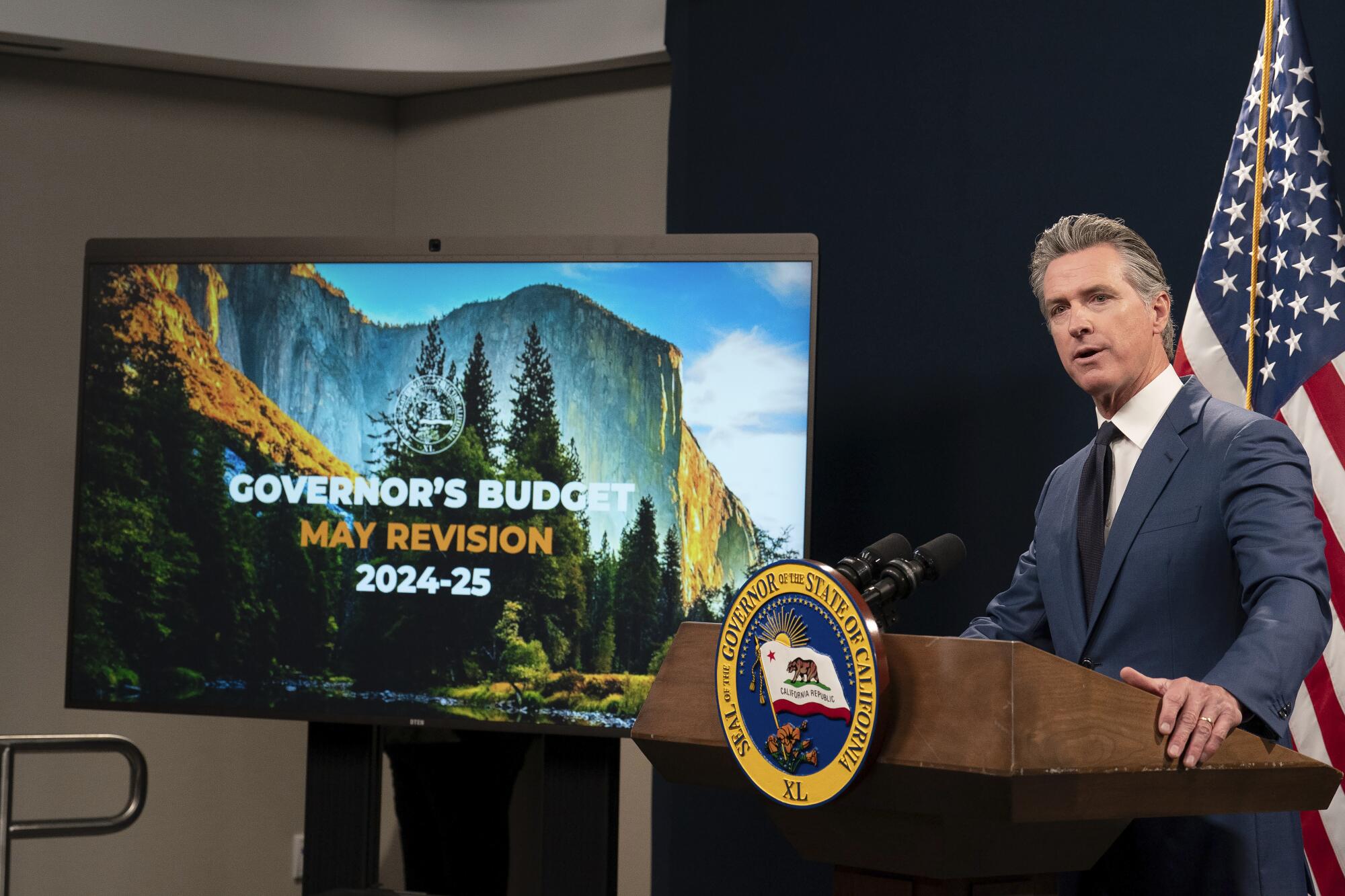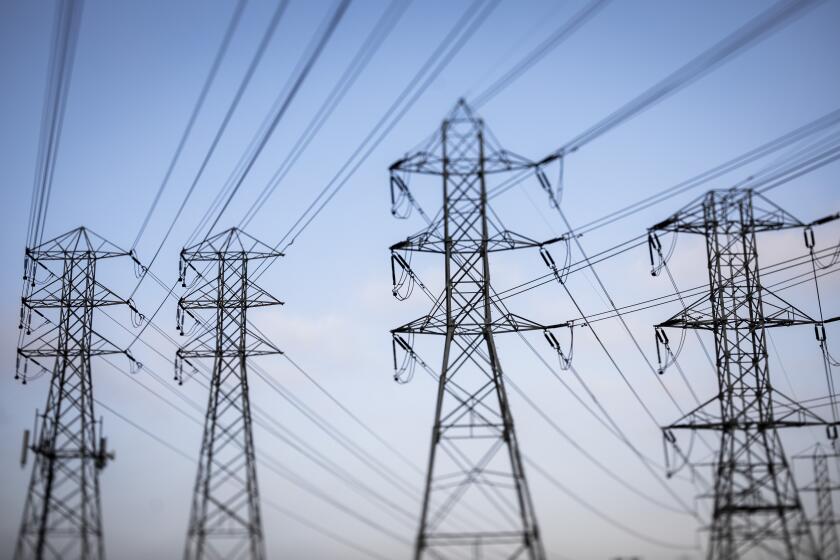
Dozens of environmental groups, renewable energy companies, labor unions, water agencies and social justice advocates are lobbying state lawmakers to place a multibillion-dollar climate bond on the November ballot.
Sacramento lawmakers have been bombarded with ads and pitches in support of a ballot proposal that would have the state borrow as much as $10billion to fund projects related to the environment and climate change.
âTime to GO ALL IN on a Climate Bond,â says the ad from WateReuse California, a trade association advocating for projects that would recycle treated sewage and storm runoff into drinking water.
âInvest in Californiaâs Ports to Advance Offshore Wind,â says an ad by companies that want to build giant wind turbines off the coast.
The jockeying by the lobbyists to get their priorities into the proposed climate bond measure intensified after Gov. Gavin Newsom proposed spending $54 billion on climate efforts in 2022 but then cut that funding to close recent massive budget deficits.
A solar energy company will soon begin clearing thousands of protected Joshua trees in the Mojave Desert, including many thought to be a century old.
If a bond is approved by lawmakers, voters will decide in November whether they want the state to borrow the money and pay it back over the decades with interest.
âThe science and the economics clearly show that prompt climate investments will save Californians money and maximize the effectiveness of adaptation options intended to benefit people and nature,â said Jos Hill of the Pew Charitable Trusts.
The nonprofit is part of a coalition of 170 groups, including those advocating for environmental justice and sustainable farming, that is lobbying for the bond.
Negotiations are ongoing in closed-door meetings, but details emerged recently when two spreadsheets of the proposed spending, one for an Assembly bill known as AB 1567 and the other for the Senateâs SB 867, were obtained by the news organization Politico.
The two plans, which would be combined into a single ballot measure, include money for wildlife and land protection, safe drinking water, wildfire prevention and shoring up the coast from erosion.
They also include hundreds of millions of dollars for projects that would benefit private industry, including some green energy companies that are already benefiting from the gush of federal money from President Bidenâs Inflation Reduction Act for efforts to mitigate global warming.
A final decision on whether to include a climate bond on the ballot must be made by June 27. The proposal is competing with plans to borrow money for other projects, including school construction. And lawmakers have said they donât want to overwhelm voters with too many pleas to take on more debt.
Assemblymember Eduardo Garcia, a Democrat from Coachella and the author of AB 1567, told The Times this week that negotiators were favoring a climate bond that would borrow $9billion.
Both the Assembly and Senate plans include hundreds of millions of dollars to build facilities at California ports to support the development of offshore wind farms.
âThe conversation is: How do we support infrastructure at the ports that can help offshore wind get off the ground?â Garcia said.
The California Public Utilities Commission voted to fundamentally change how electricity is billed by adding a new monthly fixed fee.
And $100 million or more, according to the spreadsheets, would go to building the electric transmission lines needed to connect green energy to the grid. Pacific Gas & Electric and the two other big electric companies in the state recently increased Californiansâ electric bills to pay for building and maintaining transmission lines.
Sen. Ben Allen, a Santa Monica Democrat and author of SB 867, said the numbers in the spreadsheets should not be counted on, including the amounts for electric transmission, because negotiations were continuing.
âThis is public money,â Allen said. âThis is not about making life easier for utilities.â
Governments often take out long-term debt to pay for infrastructure projects that are expensive to build but will last for decades. Yet some of the planned climate bond spending, according to the spreadsheets, would go to operate day-to-day programs that could long be over by the time the bonds are paid off.
For instance, the Assembly spreadsheet has $500million going to âworkforce development,â or training people to work in the field of clean energy.
Garcia said that many items on the spreadsheet had already been changed in the negotiations, but he declined to give details.
Allen said the focus was on long-term investment: âThe key thing with a bond is ensuring that youâre focused on investments that truly have a long-term benefit, because you are going to be asking people 25 years from now to pay for the investments that weâre putting in place this decade. So thatâs got to be a guiding principle.â
Earlier this year, Sacramento legislators had proposals to place tens of billions of dollars of bonds on the November ballot for efforts including stopping fentanyl overdoses and building affordable housing.
But those plans were crushed in March when a $6.4-billion bond measure promoted by Newsom to help homeless and mentally ill people got 50.18% of the vote, barely enough to win approval.
That measure, known as Proposition 1, will pay for new homes and treatment facilities for mentally ill people, and cost the state $310 million a year for the next 30 years.
Legislators are debating what additional proposed bonds are most likely to pass on the November ballot. They are also considering the stateâs debt-service ratio, which is the percentage of the general fund that must go to pay down the debt.
Global average temperatures and COâ levels continue to soar. May was Earthâs 12th consecutive hottest month on record, officials announced this week.
A large jump in the debt-service ratio could harm the stateâs credit rating, which now falls in the middle of the pack among the 50 states. Texas and Florida are among the better-rated states, while Illinois and New Jersey are among those with lower ratings.
David Crane, a lecturer at Stanford and president of Govern for California, a nonpartisan nonprofit created to counteract the influence of special interests, said required payments on bonds the state has already issued, and mandatory payments for employee pension obligations and retiree health insurance, âcrowd out spending on other programs.â
âIf they are going to add to that burden with another bond,â he said, âthey should make sure the money is well-spent.â
In a February report, the Legislative Analystâs Office said that the Newsom administration had been spending unprecedented amounts of money on climate and the environment but that there was little information on how effective it had been.
âThe lack of such information,â the report said, was hampering âlonger-term decisions, such as ... which programs should be prioritized for future funding.â
It is clear that groups maneuvering for a share of the proposed bond money will not get all they have requested.
In California, where fights over water supplies have been ongoing for decades, lobbyists for water agencies are asking for two-thirds of the funding.
Among their requests are $1 billion for water recycling and desalination projects, $500 million for water quality and drinking water upgrades, $950million for flood protection and $700million to improve dam safety.
âFor California to be prepared for longer droughts and be prepared for extreme precipitation events, the state needs to invest more in water infrastructure funding, and general obligation bonds are a good way to help fund infrastructure,â said Cindy Tuck, deputy executive director of the Assn. of California Water Agencies.
âThe costs of these projects are not going down,â Tuck said. âWith inflation, the costs are going up. So it really makes sense to invest now in water.â
Toward a more sustainable California
Get Boiling Point, our newsletter exploring climate change, energy and the environment, and become part of the conversation â and the solution.
You may occasionally receive promotional content from the Los Angeles Times.











